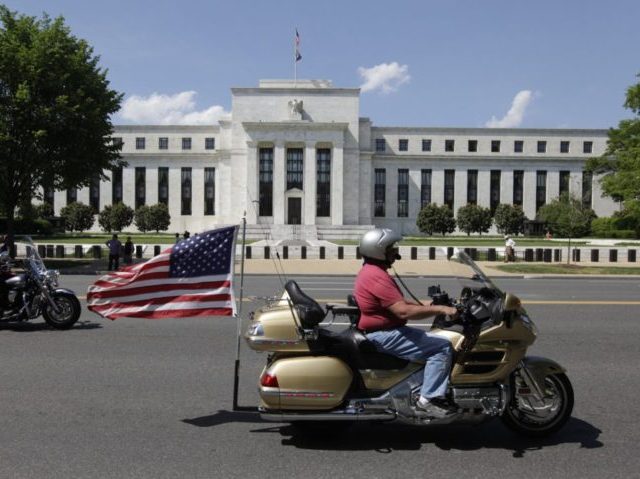The outlook for the U.S. economy remains positive with growth set to continue thanks to “robust” business borrowing, rising consumer demand, and widespread employment growth, the Federal Reserve reported on Wednesday.
The Fed’s latest read on the economy comes in the form of its “Beige Book,” which is a summary of information received from contacts in business in each of the Fed’s 12 regional districts.
“Economic activity continued to expand at a modest to moderate pace across the 12 Federal Reserve District in March and early April,” the report said.
The report’s use of “modest to moderate” to describe the pace of economic growth may relieve concerns that the economy might be at risk of overheating, one of the factors that triggered rising stock market volatility starting in late January and early February. If anything, the report may indicate that the economy could afford to heat up a bit more.
Manufacturing activity grew but only “moderately,” the Fed said. Residential construction expanded. Demand for nonfiancial services was “mostly solid.” Consumer spending rose in most regions, although auto sales were mixed in some regions. Loan demand from businesses grew and commercial real estate and construction improved. The energy sector saw a pickup in activity, except for the Richmond Fed district, where coal production was flat and natural gas production dipped.
Several Fed districts reported a jump in “commercial and industrial lending,” Fed speak for borrowings by businesses. Atlanta described loan growth as “solid,” Cleveland as “healthy” and St. Louis as “robust.” The Dallas Fed reported “markedly stronger growth” in business loans and commercial real estate.
The rise in business borrowing is good news for banks but also for the broader economy. It may indicate the start of the investment that the Trump administration has predicted will result from the cuts in business taxes and more generous write-offs for capital expenses.
Tariffs and talk of trade war does not seem to have weighed on actual activity despite being on the minds of many business people.
“Contacts in various sectors including manufacturing, agriculture, and transportation expressed concern about the newly imposed and/or proposed tariffs,” the central bank.
“Businesses were responding to labor shortages in a variety of ways, from raising pay to enhancing training to increasing their use of overtime and/or automation,” the Fed said. “Upward wage pressures persisted but generally did not escalate.”

COMMENTS
Please let us know if you're having issues with commenting.